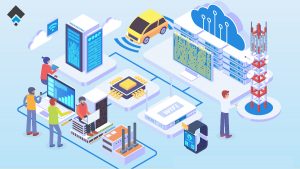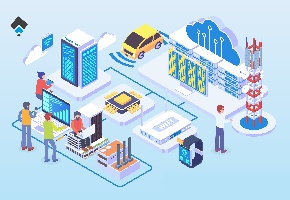
With every passing day, computer software and information technology are setting new trends in the digital commercial world. Though it is established that ‘Edge computing’ is not a new domain in the tech realm and dates back to 1960s and 1990s being the latest associate, it is not to be denied that edge computing has been propelled to greater heights as now known with advancements in machine learning and cloud computing.
An online source by the name technopedia defines Edge computing as the deployment of data-handling activities or other network operations away from centralized and always-connected network segments, and toward individual sources of data capture, such as endpoints like laptops, tablets or smartphones. In other words, edge computing brings data storage, computation and analysis closer to the specific point of generation and collection.
Edge computing solves the latency and proximity issues that otherwise cloud computing struggles to tackle. Along with this an acclaimed feature of edge computing is its decentralized topology that offers decreased bandwidth and thereby reduces inferred costs of device setup and deployment to an equitable range. Intermittent connectivity no more matters as edge computing solely does not rely on internet for data processing that occurs in a cloud, on the contrary cloud computing technology solely depend on the internet for apt functioning. In this era of enormous data availability, collection and analysis, encryption is most valued and sought after, edge computing provides a physical layer of devices/gateways that locally process data thereby securing data and avoiding manipulation.
Example:
Let’s consider a single camera that sends live footage from a remote place. If only a single such camera sends data, then the transfer and processing of data inevitably carries on smoothly. But issues start to creep in when there are multiple devices; in this case, cameras that send live footage to be processed and displayed in real time. Bandwidth gets expensive along with additional quality compromise due to latency. This problem is solved with edge computing. Edge gateways process data from edge device, locally instead of sending everything to the cloud for processing. This is ideal as it always saves the burden of not receiving real time data due to lack of internet connectivity. It is cost effective and reliable.
Use case:
Manufacturing industrial sector is said to deliver the most promising use cases with edge computing technology in the words of Ernest Sampera from one of his articles. New technologies can bring about marked gains in productivity/output. Edge computing offers strategic business decision taking facilities, it expands as well as secures business intelligence leading to manufacturing automation. In an article by Eric Hamilton fortune 500 companies like the Intel and Toyota are excited to embark on this journey with edge computing technology incorporation across their industry bases.
To conclude, as a takeaway response to what is edge computing, it is a technology solution made more reliable and flexible in terms of its operation. It brings data processing a step closer to the location of data generation and collection in order to ease its functioning even without continuous internet connectivity.
The happy news is that we, at Factana offer Industrial Internet of Things based solutions to those who aspire to optimize business intelligence and scale up efficiency with real time data at their access. Contact us to learn more!




